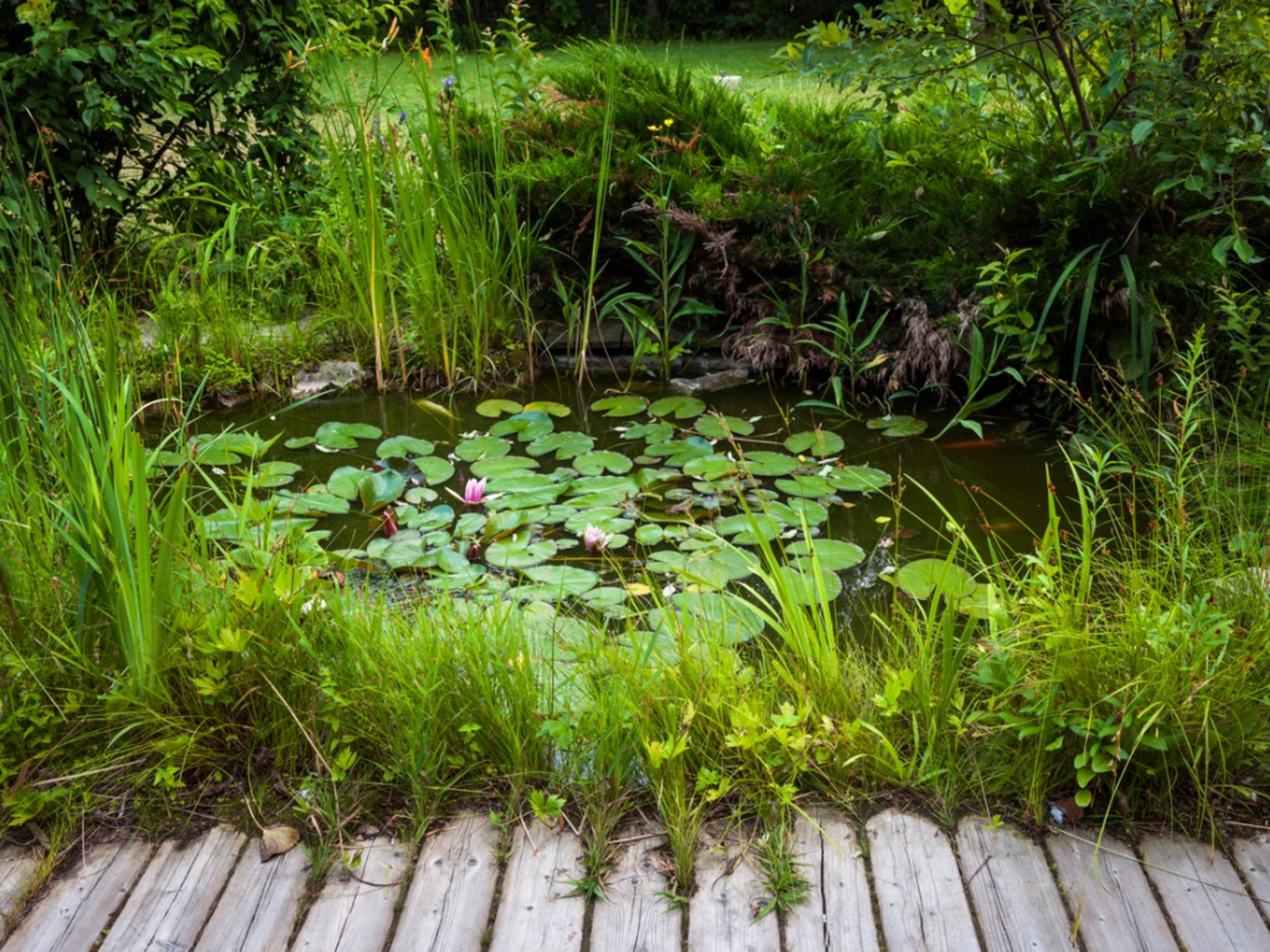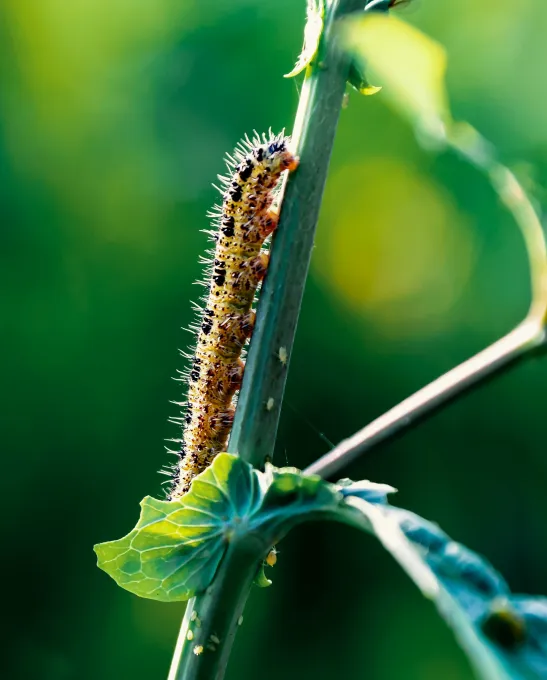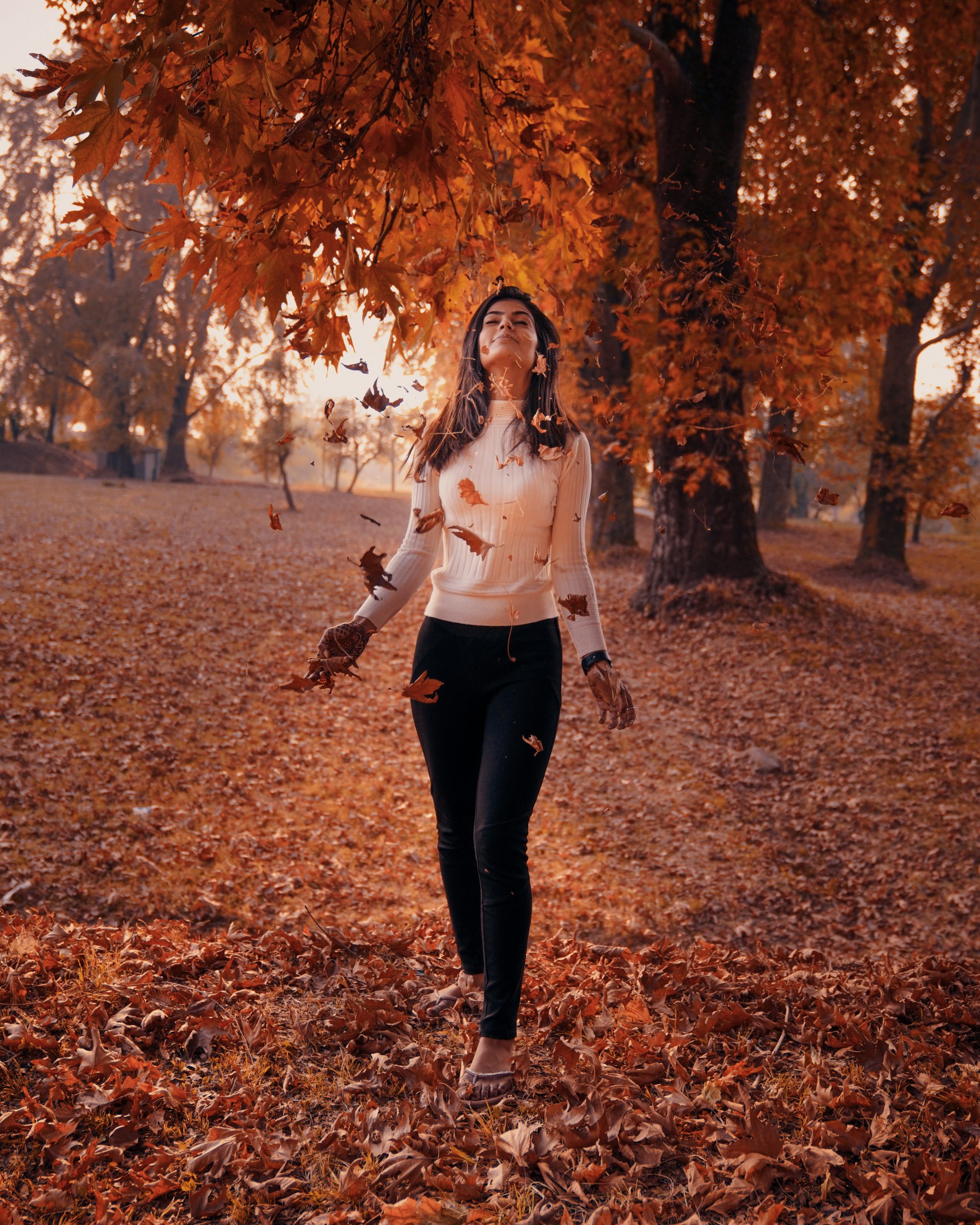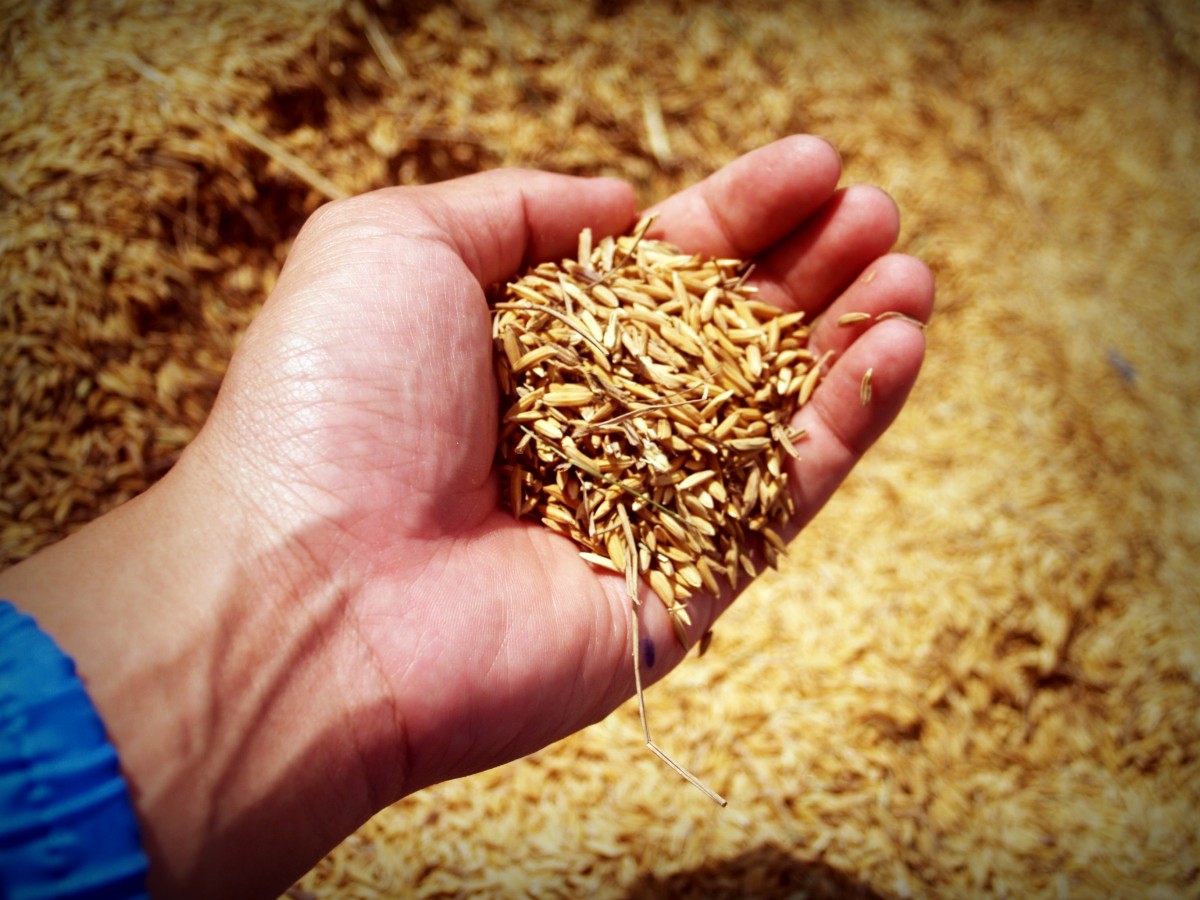Plants put the “garden” in your water garden and are a great way to add colour and soften the rocky edges of your pond. Everyone has their favourite collection of pond plants, but there might be some varieties that you haven’t yet added to your water garden. We invite you to consider the following list of popular aquatic pond plants that make a welcome addition to any pond!
Things to Consider
Several factors will affect which plants you choose for your pond. Make sure you take the following into consideration before choosing your plants:
Pond size, Depth and Position: The size of your pond has a big effect on how you should choose and arrange your plant life. It may sound strange, but the ecosystems of smaller ponds are actually slightly harder to maintain than those of larger ponds. This is because they tend to be shallower, making them more prone to drying out or fluctuating in temperature, which in turn can harm your ecosystem. Smaller ponds also provide less room for plant growth, so they have to be carefully maintained.
The position of your pond also affects which plants you should choose and where you plant them. If your pond is in a shady spot (under a tree for example) then it won’t get as much light, which means you won’t need to worry so much about preventing algae blooms with larger pond plants. If, however, your pond will be in direct sunlight for most of the day, you will need to choose plants that will reduce light levels in the water.
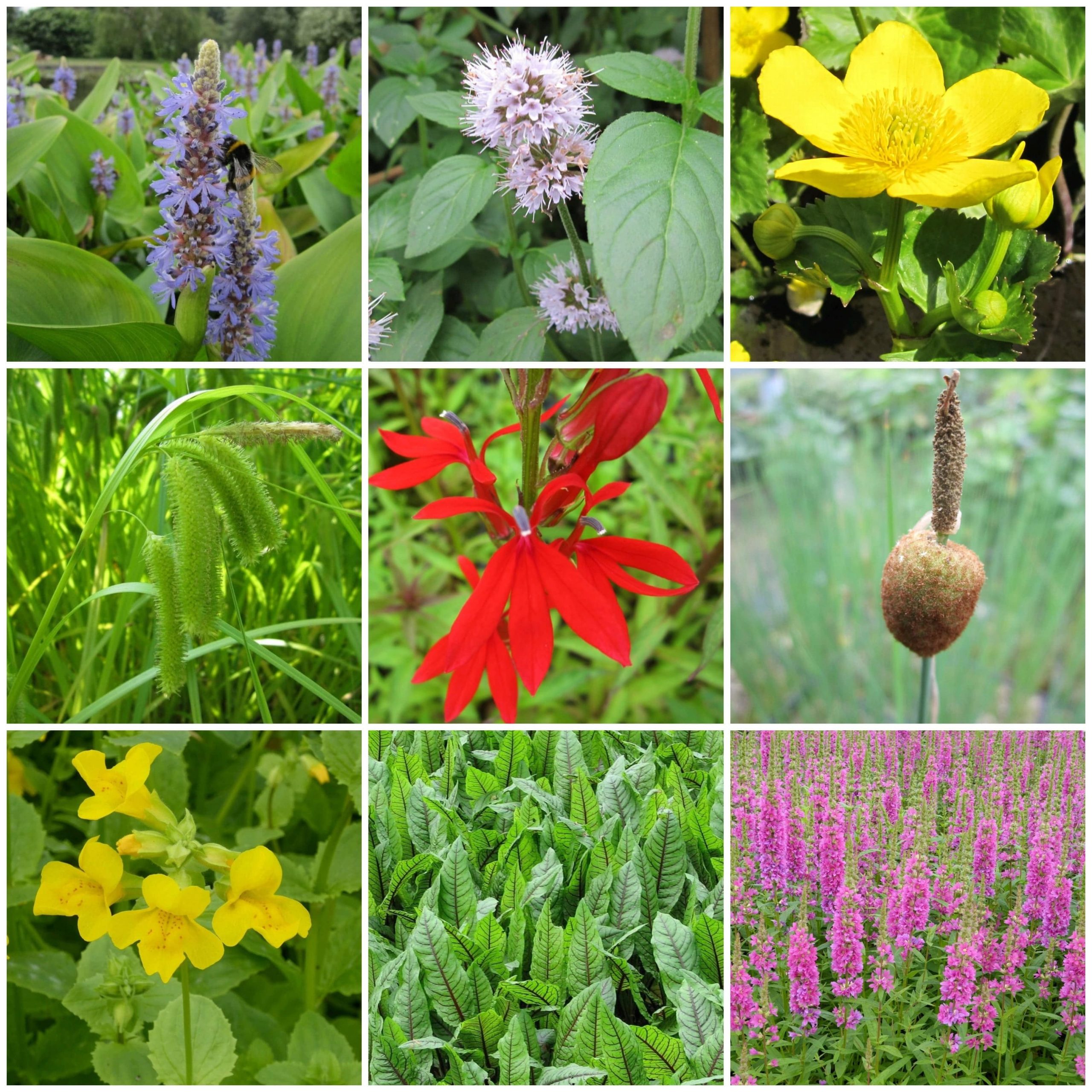
Pond Fish: If your pond will be stocked with fish you need to ensure you pick the right plants and position them in the right way. Fish need plant life for shelter and hiding places, however, they also need room to come to the surface, so you will need to strike a balance between clear and planted spaces. Some types of fish also eat certain types of plant-life, so you need to research which types of plants your fish eat to ensure they have what they need.
Don’t forget to also check that the type of planting compost you are using is pond-friendly, as some types may cause pollution which will harm your fish.
Here’s our top 10 selection of plants to introduce to your pond:
1. Creeping Jenny
Often used as a ground cover in terrestrial gardens, Creeping Jenny fares excellently when used in water gardening applications. Growing approximately two inches in height, it’s a great filler to soften the edges of rocks with its bright leaves creating a vivid contrast against the cool gray of wet stone. Tiny yellow flowers appear on the plant throughout summer, giving it added appeal.
2. Pickerel Plant
Available in blue, white, and pink lavender spiked flowers, pickerel is a great choice for ponds with its shiny, green heart-shaped foliage. The blooms are long-lasting and create a beautiful display when planted in masses.
3. Horsetail Reed
Horsetail reed provides a striking architectural presence in your pond with its segmented reeds, growing to 24″ in height, while the dwarf version grows to eight inches. It’s a fast spreader and you’ll want to thin the plant in the summer. In the fall, cut the plant all the way down to the ground to keep the spores from spreading.
4. Taro Pond Plants
Several varieties of taro are available for your pond and do well in full to part sun. This is a tropical plant so you should bring the plant inside during the winter months. Place it near a sunny window and then transfer it back out to your pond when summer arrives. This impressive, leafy water lover grows to about 48″ and always makes a striking appearance in the water garden.
5. Cardinal Flower
Plant this pretty flower along the shallow edges of your pond and watch the birds flock to it. Deep burgundy foliage sets off the vibrant red flowers. The leaves are up to eight inches long and the plant can grow as tall as three feet.
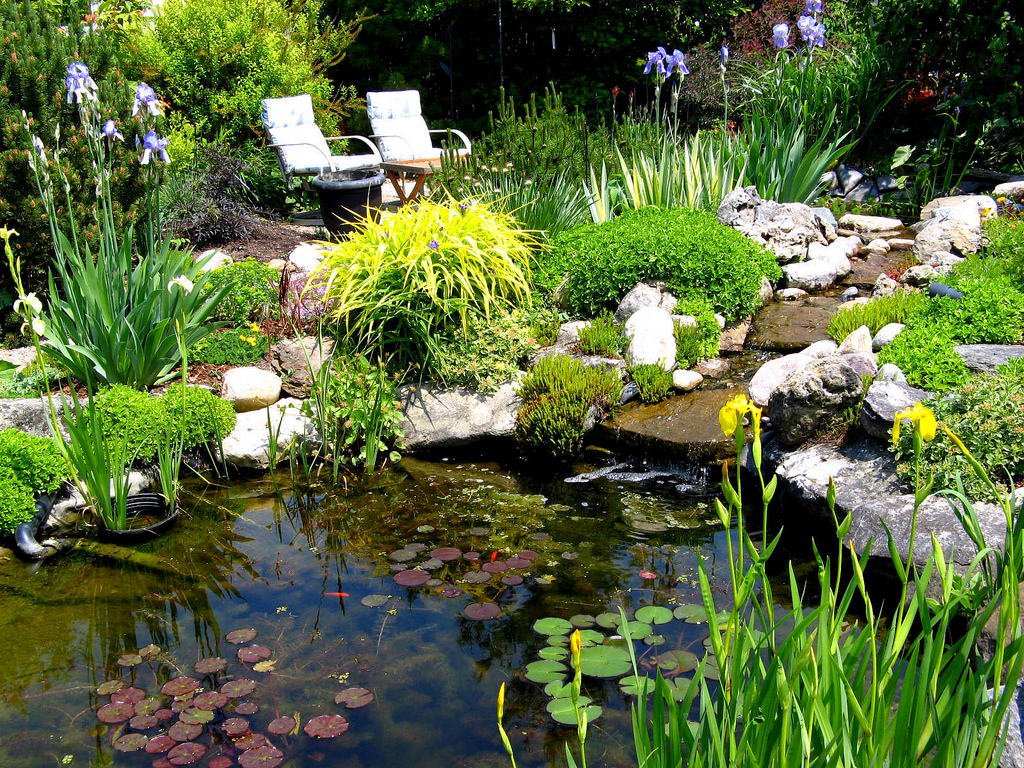
6. Water Lettuce
Water lettuce produces fuzzy, lime-green rosettes of leaves that look like little floating heads of lettuce. Super easy to grow, you simply let this plant float on the surface of the water with its roots dangling below. The roots directly absorb excess nutrients from the water, making them natural filters for any pond. They produce babies throughout the summer and can be separated and shared with friends or moved to container water gardens.
7. Mosaic Pond Plant
The beautiful and tropical mosaic plant consists of red and green diamond-shaped leaves in three- to six-inch wide rosettes. In the summer, this floating plant produces sunny yellow cup-shaped flowers. Easy to grow, the plant provides a place for your finned friends to hide underneath.
8. Blue Iris
Many water gardeners enjoy the elegant splendour of the aquatic iris, which is among the first plants to bloom in the spring. Aquatic irises comprise such a large and diverse group – there are literally hundreds, if not thousands of cultivated and natural hybrids. The blue flag iris is a native plant that can grow up to four feet tall! A wetland lover, the blue flag’s large flowers are breathtaking, ranging in shades from pale blue to purple.
9. Sweet Flag
Also known as golden Japanese sweetflag, this plant is ideal for containers and water gardens alike. It’s extremely flexible, as it can be grown with its toes in the water or partially submerged. The beautiful foliage is light green and highlighted with bright yellow stripes, remaining beautiful all season and sometimes through the winter. An all-around great plant that adds a bright, cheerful spot to any water feature!
10. Waterlilies
Waterlilies are stunning creatures in the water garden and are often the reason why many gardeners add a pond to their landscape. These beautiful pond plants are characterized by amazing flowers representing all colours in the light spectrum from red, orange, yellow, green, blue, indigo and violet (including the collective white), and a number of shades in between.
The flowers range from a mere two inches in diameter to some blooms measuring 12″ or more. Their leaves typically float unless they’re crowded, and are more or less round, ranging from 2″ across to over 6 feet for the giant Victoria. Waterlilies are available in both hardy and tropical varieties.
